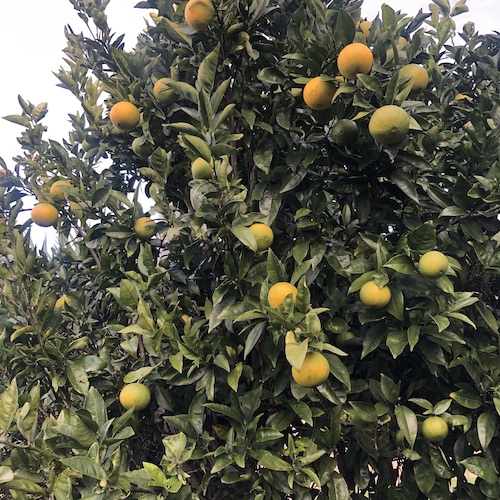
Fermented foods like sauerkraut are enjoying a big resurgence among healthy eaters and for good reason, they contain a multitude of good bacteria essential for increasing antibodies and strengthening the immune system, they also help to reduce sugar cravings, regulate the appetite and when made well, taste great!
One of the healthiest fermented foods is sauerkraut; Cabbage contains natural isothiocyanate compounds (such as sulforaphane) which have cancer-fighting properties, and sauerkraut is teeming with beneficial lactobacillus bacteria – more than is in live yogurt – which increase the healthy flora in the intestinal tract. This helps the immune system fight infection, and aids digestion, hence sauerkraut’s venerable reputation as a remedy for upset stomach and constipation.
I love sauerkraut with most foods so I decided to make some, after finding this recipe in The Observer, which I’ve adapted slightly. As they suggest it would also make a great edible gift. I fermented mine in the basement for three weeks and the result was a wonderful crisp, pink, gorgeous tasting sauerkraut.
Wendyl’s Sauerkraut Recipe
5 Ingredients | Vegan, Gluten Free
1kg White Cabbage
1kg Red Cabbage
1 tbsp Caraway Seeds
1 tbsp Celery Seeds
2 tbsp Sea Salt, fine
Finely chop both cabbages, removing the outer leaves if necessary and setting aside the core. A mandolin is great for this, or you can use a food processor.
Put the shredded cabbage in a very large bowl and sprinkle with the salt. Toss well to distribute it fairly evenly, then begin vigorously massaging the salt into the leaves with your fingertips. Add the seeds and massage again to distribute.
After a few minutes, the cabbage should start to weep. Keep going until there’s a significant amount of liquid when you press it down, which should take about 10-15 minutes in total.
Transfer the cabbage and the liquid into large glass sterilised jars. Pack the cabbage right down as you push it into the jar; it needs to be submerged in the liquid. Weigh down with a clean stone so that the cabbage stays covered.
Cover with the lid (don’t screw it on) and leave in a cool, well-ventilated spot for between five days and five weeks, depending on how sour you want it. Keep an eye on it, to check the cabbage is still covered by liquid, and taste it occasionally to check on its progress.
Once the sauerkraut is sour enough for your liking, remove the weights, seal the jar, and refrigerate or store in a cool place.



About The Author: Grant_admin
More posts by grant_admin